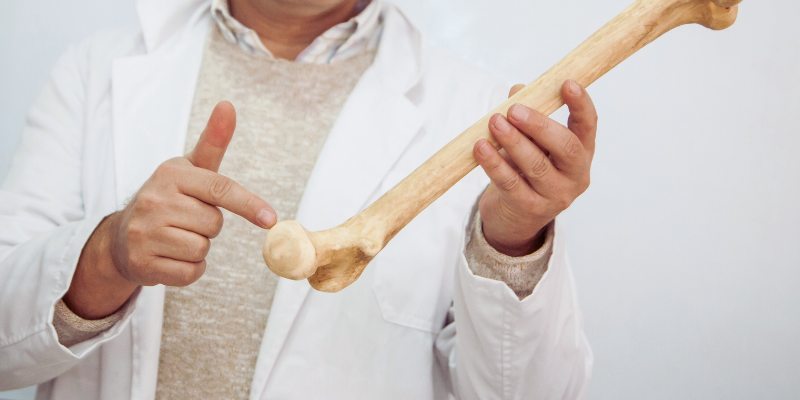What Causes Osteomyelitis: Understanding the Root of Bone Infections
Osteomyelitis is a major bone infection brought on by bacteria or fungi affecting any bone in the body. It could strike suddenly or progressively, causing redness, swelling, and discomfort. Preventing major complications and long-term harm depends on early treatment. Those most at risk are those with poor circulation, diabetes, weak immune systems, or open wounds. The infection could pass through the circulation or originate in surrounding tissues.
Operations, fractures, or injuries can bring germs into the bone, raising the likelihood of infection. Doctors identify osteomyelitis using blood tests, imaging scans, and bone biopsies. Treatment calls for lifestyle adjustments, antibiotics, and surgery. If untreated, the infection can become persistent and cause either deformity or bone mortality. Early identification and prevention of osteomyelitis depend on an awareness of its causes.

How Does Osteomyelitis Develop?
Osteomyelitis begins when bacteria or fungus compromise a bone, causing inflammation and tissue damage. Direct traumas like fractures or surgery, surrounding tissues, or the bloodstream can all allow the infection to reach the bone. Once within, bacteria proliferate and cause swelling, redness, and excruciating agony. Although the immune system battles the infection, inadequate blood flow makes healing challenging. Abscesses may develop, obstructing flow and preventing antibiotics from getting to the affected area. It aggravates the illness and raises the likelihood of chronic infection.
If untreated, osteomyelitis can weaken the bone, causing fractures or abnormalities. Severe cases could call for the removal of dead bone tissue by surgery. Early diagnosis is vital from blood testing, imaging, and biopsies. Treatment calls for either surgical intervention, drainage, or antibiotics. Knowing how osteomyelitis spreads helps with early identification, lessening of consequences, and better healing. Managing health issues, good cleanliness, and wound treatment help to avoid infection.
Common Causes of Osteomyelitis
Early diagnosis and prevention of osteomyelitis depend on an awareness of its causes:
Bacterial Infections
Bacteria mostly cause osteomyelitis; Staphylococcus aureus is the most often occurring organism. Through incisions, wounds, or operations, these bacteria enter the body and move through the circulation to compromise bones. Particularly in those with diabetes, cancer, or kidney illness, weakened immune systems raise the risk. Untreated infections and inadequate cleanliness can aggravate the dissemination. Among the symptoms include redness, swelling, and great discomfort. Doctors write prescriptions for medicines to kill germs. Preventing problems requires early treatment. Dead bone tissue may develop in chronic situations and calls for surgical removal. Osteomyelitis may permanently destroy and distort bones without treatment.

Fungal Infections
Although rare, fungal osteomyelitis targets persons with impaired immune systems. Fungi like Aspergillus and Candida enter the body through inhalation, wounds, or medical tools. Most vulnerable have cancer, people having transplants, and long-term steroid users. The infection travels to the bones from the skin or lungs, causing fever, inflammation, and pain. Fungal osteomyelitis moves slowly, and diagnosis is difficult, unlike bacterial diseases. Antifungal medications are the primary treatment; severe cases might necessitate surgically removing infected tissue. Early diagnosis is crucial since fungal infections are more difficult to treat and may cause long-term bone damage.
Bloodstream Infections
Microorganisms from various diseases moving from the blood to the bones can cause hematogenous osteomyelitis. This disease commonly strikes young and old adults, targeting the spine, pelvis, and long bones. Deep cuts, urinary tract infections, and pneumonia can all get bacteria into the circulation. Germs multiply once within the bone, causing edema, fever, and pain. Blood cultures and imaging tests support the diagnosis through validation. One must use strong intravenous antibiotics to stop the infection. Treatments can lead to abscesses, therefore limiting blood supply and damaging bones. Early hospitalization and aggressive treatment are needed to prevent long-term effects.
Bone Injuries and Surgeries
Open fractures, serious injuries, and procedures let bacteria penetrate bones and cause osteomyelitis. Especially under incorrect sterilizing methods, metal implants, bone repairs, or joint replacements increase infection risk. Inappropriate healing of a wound could allow bacteria to flourish inside the bone. Infected implants could have to be physically removed to stop the exacerbation of symptoms. Doctors use sterile techniques and antibiotics to lower the risk of infection. If osteomyelitis develops, surgical excision of contaminated bone tissue is often required. Through routine wound care, hygienic practices, and follow-up visits, identify and treat infections before they spread.
Poor Circulation and Diabetes
Bad blood circulation lowers oxygen and nutrients in bones, increasing the risk of osteomyelitis. Diseases that influence circulation include diabetes, peripheral artery disease, and nicotine use, therefore weakening the body's defenses against infections. Diabetic foot ulcers are a big concern since germs can enter wounds and spread to bones. It is diabetic foot osteomyelitis. Regular foot care, hygiene, and blood sugar control all help prevent. Imaging studies help doctors spot early infections. Depending on the course of therapy, severe instances may require amputation. Good diabetes control and wound therapy significantly reduce the incidence of infection-related complications.
Symptoms of Osteomyelitis
Early recognition of osteomyelitis symptoms is essential for appropriate treatment and avoidance of complications. Usually beginning with extreme bone pain that gets worse with time, the infection starts. Inflammation might cause the afflicted area to swell, turn red, and get warm. Fever and chills are common as the body battles the infection; many patients also suffer from weakness and tiredness. Sometimes, the infection causes difficulty moving the impacted limb, which results in mobility problems.
The infection in chronic osteomyelitis can lead to pus discharge from an open wound, possibly with an odor. It suggests the infection has progressed and calls for quick medical intervention. Untreated osteomyelitis may cause abscess development, bone damage, or perhaps even bone death. Early diagnosis and efficient treatment with antibiotics or surgery depend on early medical attention sought at the first hint of symptoms. Good management can help to improve recovery and avoid long-term problems.
Conclusion:
Caused by fungus or bacteria, osteomyelitis is a major bone infection. It can affect any bone through the bloodstream, traumas, or operations. Those with diabetes, poor circulation, or weak immune systems are more vulnerable. Typical causes are open wounds, bacterial infections, and fractures. Bad circulation lowers the body's capacity to fight infection, aggravating problems. Prevention of significant damage depends on early identification. Treatment calls for antibiotics, surgery, and lifestyle adjustments to encourage healing. See a doctor immediately if you have a fever, edema, or ongoing bone pain. Knowing osteomyelitis guarantees early, successful treatment and helps with prevention.












